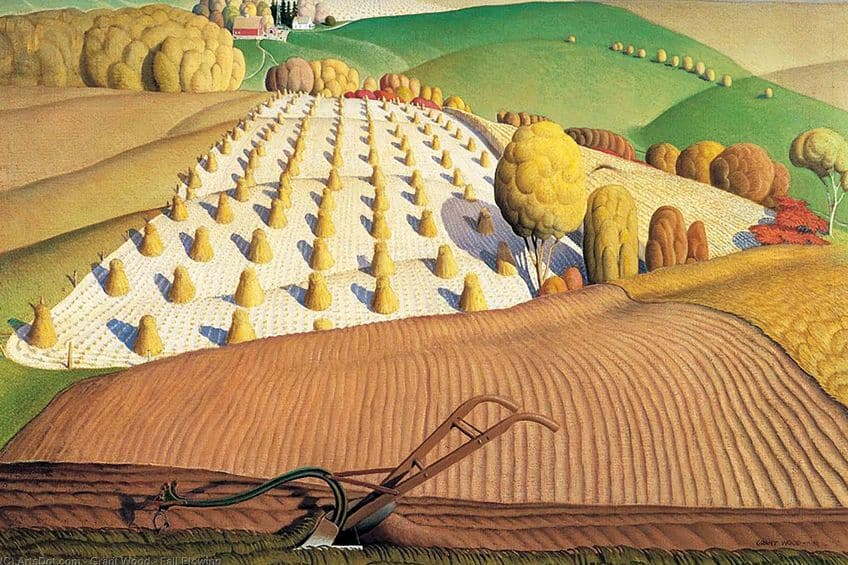Rhythm in Art – Explore How Beat Becomes Visual in Art
Rhythm is so intuitive that even those who are not visual artists are likely to be engaging with it daily. Visual repetitions and patterns are common in the natural and man-made world and visual art is no exception. It is most often discussed in terms of music, but it is also a visual concept. In art, the use of rhythm can be said to produce a visual tempo.
Contents
- 1 The Visual Beat of Rhythm in Art
- 2 The Five Main Types of Rhythm in Art
- 3 Rhythm Art Examples
- 3.1 Flowing Rhythm in Henri Matisse’s The Dance (1910)
- 3.2 Alternating Rhythm in M.C. Escher’s Regular Division of the Plane with Reptiles/ Lizards no.56 (1942)
- 3.3 Progressive Rhythm in Gerard Sekoto’s Song of the Pick (1947)
- 3.4 Random Rhythm in Rene Magritte’s Golconda (1953)
- 3.5 Regular Rhythm in Donald Judd’s Untitled (1967)
- 4 Frequently Asked Questions
The Visual Beat of Rhythm in Art
There is no true consensus about the number of elements and principles of art and design, but rhythm is almost always included in these lists. Artists and graphic designers use rhythm to direct the viewer’s attention through an artwork. They use visual elements much like musicians would use sonic elements.
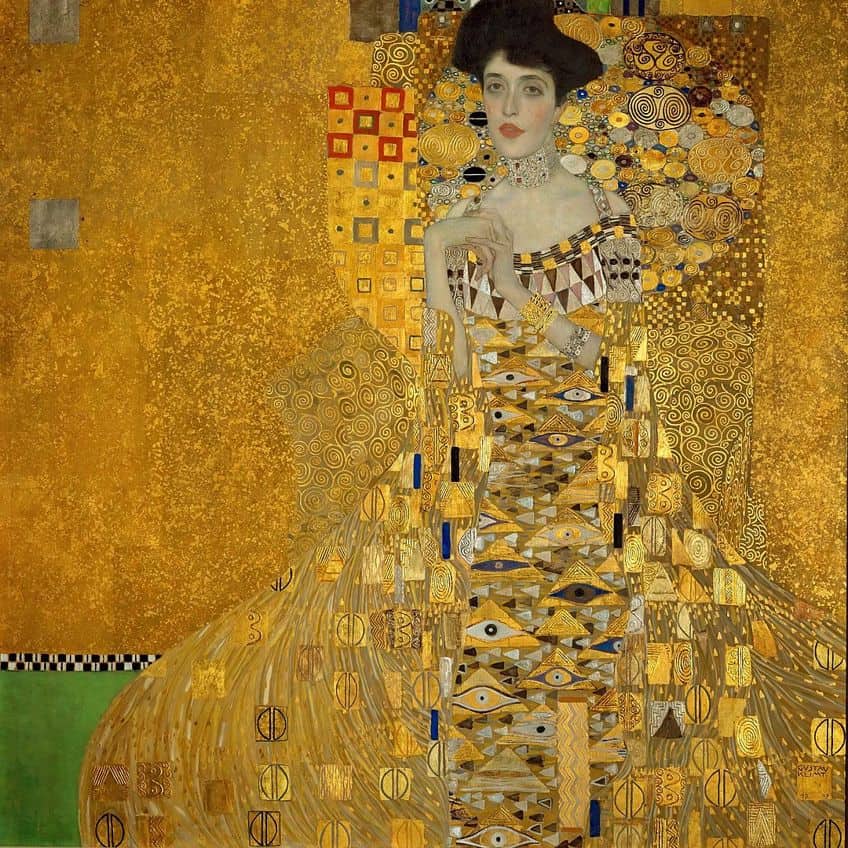
What Is Rhythm in Art?
Rhythm in art and design refers to repeated visual elements such as line, shape, color, and texture which help create interest, balance, or unity in an image. These elements that appear repeatedly in an artwork often work in tandem.
As a principle of design, rhythm describes the combination of elements that often results in the illusion of movement.
Similar Principles of Art
The elements of design are the building blocks of image-making. The principles of design are the visual tools or methods that can be applied to the elements to give structure to a visual text. To understand the definition of rhythm in art, it is necessary to have an overview of similar principles of art that correspond with the principle of rhythm. Movement, repetition, and pattern are often used interchangeably with rhythm, though they all differ slightly. Despite their obvious similarities, it is important to highlight their distinctions.

Movement
Rhythm and movement are interchangeable to some degree, but they have slight differences. Ultimately, the principle of rhythm involves the repetition of the elements of art and can sometimes create the illusion of movement. Elements such as line and color can be manipulated to create rhythm. Repeated lines can be organized around a certain object, which results in the appearance of movement. A line can be wide on one side of the image and get narrower as it moves to another. The aesthetic of rhythmic movement includes a visual beat or tempo. Rhythmic movement in art produces the appearance of action. It causes the viewer’s eye to wander through an artwork at a particular pace.
Movement can be used to attract attention to or from a focal point.
Repetition
Repetition refers to cases where elements are repeated without much variation. Rhythm and repetition are another common pair in the principles of art. Incorporating repeated elements that match one another in an image can be pleasing to the viewer. Therefore, artists often attempt to create work with elements that match one another. Both rhythm and repetition engage patterns to create unity among various elements. Repetition makes an artwork balanced. The repetition of elements results in a pattern, which in turn results in rhythm. Rhythm is therefore essentially a product of repetition.
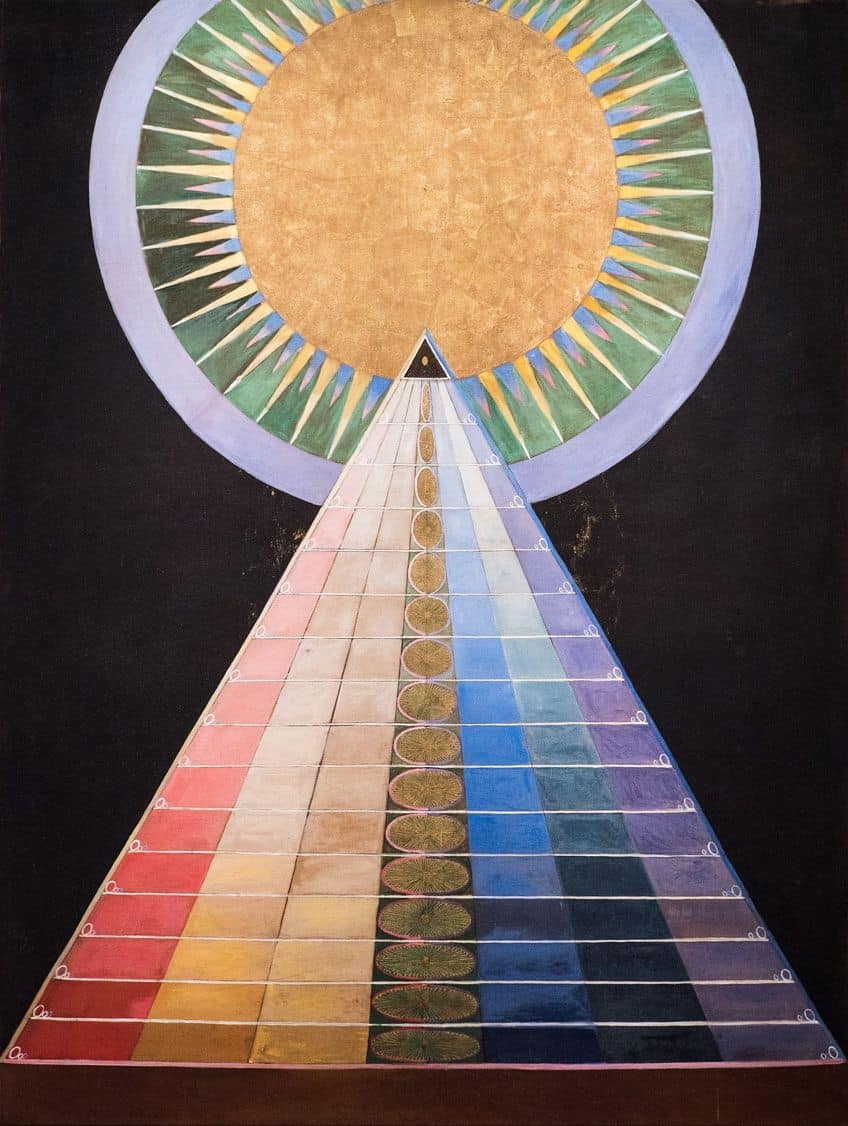
However, rhythm and repetition differ in that rhythm need not be produced from similar items only. To create a supremely rhythmic image, artists may incorporate repetition. But repetition alone can get monotonous. Rhythm can add variation to the repeated elements, making the artwork more dynamic.
Pattern
Pattern is distinct from repetition as it often contains more than one repeated element. These various elements are often repeated sequentially. While repetition is the foundation of pattern, pattern is more complex. Pattern uses repetition to make an artwork more dynamic and yet more balanced. Thus, rhythm and pattern are also alike, except rhythm has a bit more flow. It is not as monotonous as pattern. Unlike pattern, rhythm is not comprised of mainly repetition. Rhythm has a sense of tempo in that it speeds up or slows down through subtle variation. A good example of pattern is a brick wall in which the same rectangle with the same texture and color is repeated at similar intervals.
The comparison between pattern and rhythm is useful because it can help artists use pattern to achieve rhythm.
The Five Main Types of Rhythm in Art
The principles of design can be applied to most artworks, but most of the principles also have subcategories that are important to highlight. Understanding what is rhythm in art requires a basic knowledge of the different ways in which rhythm can be created and utilized. These rhythm sections or types are regular, random, alternating, progressive, and flowing rhythm.

Regular Rhythm in Art
Regular rhythm in art refers to cases where rhythm follows the same intervals repeatedly, and the pattern is easily discernable to the eye. Regular rhythm follows a precise pattern and has no variations. While this doesn’t limit an artwork to using this repeated rhythm throughout, it does suggest that unchanging repetition is present at some point. A great example of regular rhythm is a white picket fence which consists of repeated wooden planes. Therefore, regular rhythm is not only easy to recognize, but also to create.
For this reason, regular rhythm can also be seen as monotonous.
While various elements can be included, it is defined by the repetition of similar elements. Minimalist artists are known for their penchant for regular rhythm. A good example of regular rhythm in art is Donald Judd’s Untitled (1967). This piece consists of twelve vertically wall-mounted units. There are meticulously calculated regular intervals within the installation. The identical size of the elements within the display combined with the regular intervals between the units results in an inorganic and highly mechanical appearance.
Alternating Rhythm in Art
Alternating rhythm in art refers to the repetition of more than one element in any given pattern. It is like regular rhythm, but it has a bit more complexity. Alternating rhythm is a great way to disrupt the monotony of regular rhythm. While it is just as discernable to the eye are regular rhythm, there are more possibilities in alternating rhythm which is like a back-and-forth, rather than a straightforward repetition. A good example of alternating rhythm is a chessboard. With its repetitive, alternating black and white squares, a chessboard has a clear sense of back and forth. Because a chessboard alternates between these simple black and white squares, it is quite a basic example of alternating rhythm, but this type of repetition can be far more dynamic and satisfying than regular rhythm.
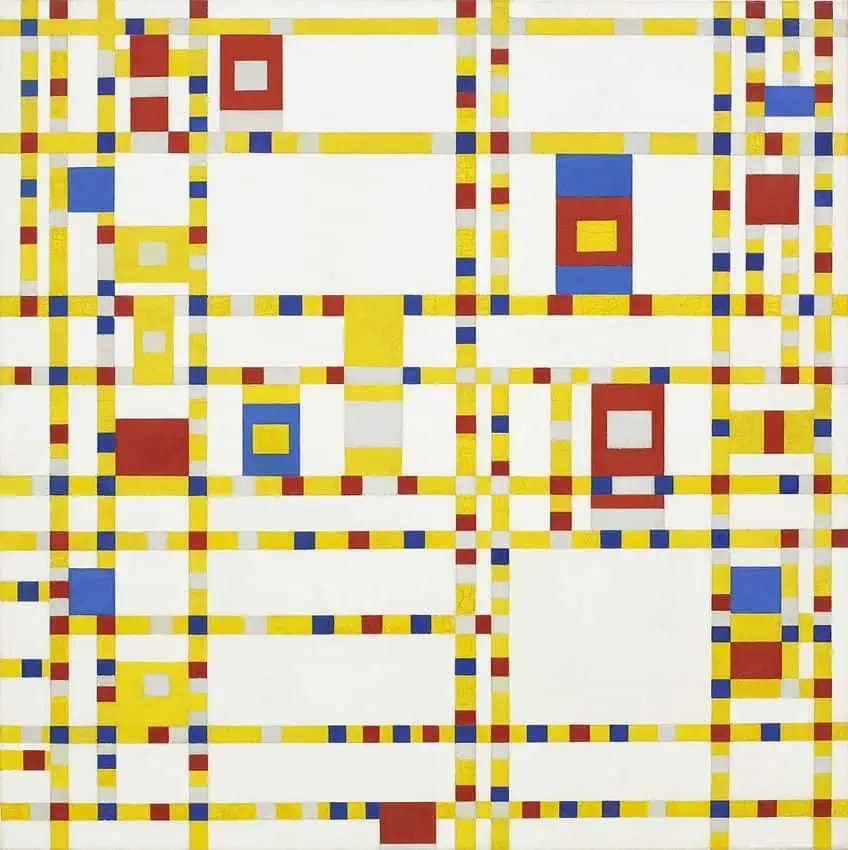
Ultimately, alternating rhythm differs from regular rhythm because it involves the repetition of two or more elements. As these components are used interchangeably, alternating rhythm results in more satisfying imagery. Keith Haring’s Untitled (1986) is a typical example of alternating rhythm in art. Firstly, there is an alternation of the thick strokes of black and white paint on the canvas. Secondly, while Haring’s repeated figures depicted appear identical, they are shown in various configurations. They stretch, bend and move in different directions only connected by the color and consistency of the thickness of the white paint on a black background, making the entire composition appear as a cumulative gesture of alternation.
Progressive Rhythm in Art
Progressive rhythm in art describes an image where elements change steadily. The elements can get larger or smaller, lighter, or darker as the pattern progresses. Progressive rhythm in art is closely related to linear perspective. It is often used to create a sense of depth, distance, or movement through space. To create progressive rhythm, an artist could use gradually increasing color values, or a light source to make objects appear to grow darker or lighter. They could also make objects appear to be moving closer or further away from a certain point.
An example of progressive rhythm is an image of a sidewalk.
The sidewalk can get smaller as the image proceeds further into the distance, causing the viewer’s eyes to progress through the image. Another useful example is the rings in a cross-section of a tree. If the viewer’s eyes started from the center of the tree at the smallest ring, they would notice that the rings grow progressively outwards, getting bigger and bigger.
Another example of progressive rhythm can be seen in Gerard Sekoto’s Song of the Pick (1946-1947). Progressive rhythm is created through the way Sekoto chooses to depict the figures’ faces. The figures are not positioned at regular intervals, creating an irregular rhythm. The composition is strongly asymmetrical with the group of workers on the left being balanced by the small figure of the warden on the right. The action represented in the painting combined with hard, strong, repetitive elements results in a progressive rhythm.
Flowing Rhythm in Art
Flowing rhythm in art refers to images that exhibit circular or curved elements. Because of its organic nature, flowing rhythm is often regarded as the type of rhythm that best imbues a sense of movement to an artwork. Flowing rhythm, which usually mimics elements found in nature is very popular amongst commercial illustrators and graphic designers. The natural progressiveness of flowing rhythm allows it to often be used in tandem with progressive rhythm. But because of its reference to nature, it can also incorporate elements of random rhythm. As in nature, no two elements are identical. Therefore, flowing rhythm offers artists a great deal of variety and freedom.

Examples of flowing rhythm include flowers, waves, or clouds. Waves are a particularly popular motif because of their natural, flowing rhythm. For centuries, artists have been attempting to mimic the flowing rhythm caused by waves crashing against the shore or floating above the shore sands. The natural curving pattern of waves is appealing and satisfying to the eye. One of the most commonly used examples of flowing rhythm in art is Vincent van Gogh’s Starry Night (1889). In this painting, van Gogh used color to create rhythm. Similar colors are repeated in the various elements as the viewer’s attention is guided along the direction of the sequential changes of color. There is a circular flow to the composition with the star-filled night sky and the moon appearing as though they are in motion.
Random Rhythm in Art
The next type of rhythm is called random rhythm. It is sometimes referred to as irregular rhythm. Random rhythm in art appears to have no discernible or exact pattern. The elements of art are repeated unpredictably. While there is an art to employing random rhythm, it is not an exact science. Good examples of random rhythm are rocks on a shore, trees in a forest, crowds of people, or falling snow. The common expression that no two snowflakes are exactly alike, is pertinent here.
Falling snow has no discernable pattern, but it does constitute a rhythm as snowflakes do look similar and fall at a similar pace.
Were an artwork to depict these elements as identical, with equally spaced intervals, it would appear quite mechanical and strange. Natural scenes are better depicted with substantial variations in the shape, scale, and placement of objects. Rene Magritte’s Golconda (1953) is a good example of random rhythm in art. The multiple and layered figures Magritte depicts look familiar. Like his son-of-man character, they are all identically dressed in ambiguous clothing, but their positioning has no real pattern and they seem to be pointing in different directions. The repetitively layered figures create a sense of randomness which exemplify the trope of random rhythm in art.
Rhythm Art Examples
To recap, rhythm can be created through various art elements such as line, color, shape, space, or textures. The principle of rhythm can be used to suggest movement. Rhythm can be used to add interest, balance, and unity to artwork. Rhythmic elements that are assembled sequentially are pleasing to viewers. This explains why rhythm is such a popular device in the making and appreciation of art. In their own ways, artists have attempted to use this principle in interesting and innovative ways. Below are some examples of the practical application of rhythm in art.
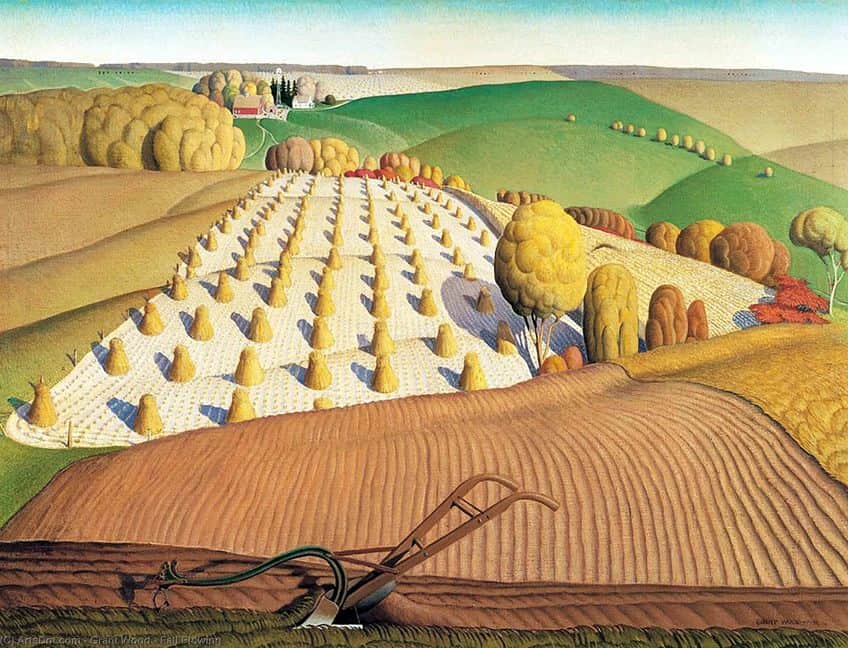
Flowing Rhythm in Henri Matisse’s The Dance (1910)
| Date | 1910 |
| Medium | Oil on canvas |
| Dimensions | 260 x 391 cm |
| Genre | Oil painting |
| Style | Fauvism |
| Location | State Hermitage Museum (since 1948), The Museum of Modern Art |
Henri Matisse’s Dance (1910) is another example of a painting that relies on the implication of musical rhythm. The arrangement of the dancing nudes suggests a rhythmic succession which implies hedonism and liberation.
This painting has often been associated with Igor Stravinsky’s musical piece Dance of the Young Girls (1913) from The Rite of Spring (1913).
Matisse’s sizeable decorative panel depicts five nude dancing figures. The figures are not identical, and they are arranged in a flowing, circular configuration, which suggests movement. The organic figures are painted in a strong red and the background is a basic green landscape set against a deep blue sky. The striking warm colors are contrasted by the cool blue-green of the background. Matisse’s fascination with primitive art is reflected in this image, which uses an iconic Fauvist color palette.
Alternating Rhythm in M.C. Escher’s Regular Division of the Plane with Reptiles/ Lizards no.56 (1942)
| Date | 1942 |
| Medium | Watercolor, Indian ink, Colored pencils, Gold ink |
| Dimensions | unknown |
| Genre | Graphics, Tessellation |
| Style | Op art |
| Location | Collection Gemeentemuseum Den Haag, The Hague, The Netherlands |
C. Escher’s Lizards (1942) is an exceptional example of alternating pattern in art. This work follows a pattern that is both repetitive and satisfying. The lizards alternate from white to brown, to black, and back to brown and white again.
There is a back-and-forth dynamic and the pattern is distinguishable, even at first glance.
As an artist, M. C. Escher was known to incorporate mathematics into his artworks. His images are executed with an exact science, resulting in a distinctly mechanical aesthetic. While Lizards is mechanical, the artist’s style does shine through. There is a playfulness in the fact that the lizards look like puzzle pieces. Their snug fit and repetition are satisfying to look at.
Progressive Rhythm in Gerard Sekoto’s Song of the Pick (1947)
| Date | 1947 |
| Medium | Oil on board |
| Dimensions | 49 x 70 cm |
| Genre | Oil painting |
| Style | Social realism |
| Location | Private collection |
Some have argued that the classic artwork by Gerard Sekoto, Song of the Pick (1947) is an example of regular or irregular rhythm. While the subjects may all be in the same stance, with their picks raised energetically above their heads, they are wearing different clothes. Additionally, the figure in the foreground is the largest, and the figures become gradually smaller as they move closer to the background.
This suggests a linear perspective and is therefore an example of progressive rhythm rather than regular or irregular rhythm.
As the figures move further into the background, they form a strong diagonal line and some of the picks begin to be cropped at the top of the painting. The black figures are single-form road workers, digging in unison, closely watched by a white overseer. Just like the action of digging, the elements depicting the working men are repeated and progressive. The title and the artist’s visual interpretation of the movement suggest a rhythmic sound.
Random Rhythm in Rene Magritte’s Golconda (1953)
| Date | 1953 |
| Medium | Oil on canvas |
| Dimensions | 81 x 100 cm |
| Genre | Oil painting |
| Style | Surrealism |
| Location | The Menil Collection |
Rene Magritte’s Golconda (1953) is a great example of random rhythm in art. The figures depicted in this painting look almost identical, all dressed in overcoats and bowler hats. However, a closer look shows that there are slight variations in the figures. They all seem to either be falling, or floating in different areas of the sky and are facing different directions.
Other than their formal similarity and the obvious repetition, the figures are all positioned in a way that has no discernable pattern. A pattern could emerge if a viewer considers the composition as layers of triangular, hexagonal, or helix arrangements of the figures. These layers create a randomness that feels simultaneously calm and calculated.
Regular Rhythm in Donald Judd’s Untitled (1967)
| Date | 1967 |
| Medium | Lacquer on galvanized iron |
| Dimensions | (22.8 x 101.6 x 78.7 cm), installed vertically with 9″ (22.8 cm) intervals |
| Genre | Sculpture |
| Style | Minimalism |
| Location | The Museum of Modern Art, New York City, New York, United States |
Donald Judd is an artist whose work is often cited as one of the clearest rhythm art examples. His iconic minimalist sculptures use regular rhythm with a startling degree of precision. Untitled (1967) is no exception.
While the display changes depending on the exhibition space, the artwork itself is consistent in its creation of a perfectly regular rhythm.
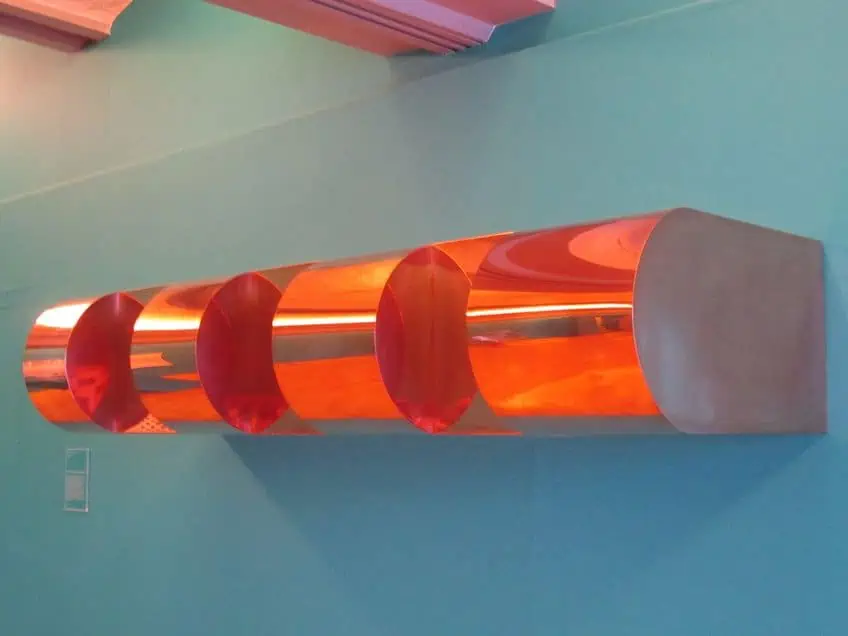
Seemingly based on some mathematical calculation, the squares that make up the artwork are separated from one another in exactly even intervals. In the construction of this artwork, the artist used mechanical compositional tools and non-organic materials. Because of its monochromatic and shelf-like appearance, some argue that this work is monotonous, but that is precisely the aspect that makes it a great example of regular rhythm.
As most artists have an innate ability to arrange elements pleasingly, rhythm in art can be seen as an intrinsically intuitive principle of art. Even those who are not artists can be said to have a natural sense of the logical arrangement of objects. Nonetheless, it is important to be intentional about the way that we represent and repeat the elements of art. Artists can master their craft by paying particular attention to their use of repetition, pattern, and movement.
Frequently Asked Questions
What Creates Rhythm in Art?
The repetition of elements of art such as line, shape, and color is used to create rhythm. These elements can be repeated either in a regular, irregular, alternating, progressive, flowing, or random manner.
What Is Rhythm in Design?
Rhythm in art is no different from rhythm in graphic design. It refers to the relationship between the elements of art and is based on their repetition, which creates a sense of movement, guiding the viewer’s focus in one way or another.
What Is Rhythm in Music?
As in art, musical elements such as a beat, or chords are repeated to create pattern in music which forms the structure of a song. This repetition is what makes a song rhythmic and catchy. A song’s rhythm is the stable pattern upon which musical composition and enjoyment are based.
Liam Davis is an experienced art historian with demonstrated experience in the industry. After graduating from the Academy of Art History with a bachelor’s degree, Liam worked for many years as a copywriter for various art magazines and online art galleries. He also worked as an art curator for an art gallery in Illinois before working now as editor-in-chief for artfilemagazine.com. Liam’s passion is, aside from sculptures from the Roman and Greek periods, cave paintings, and neolithic art.
Learn more about Liam Davis and about us.
Cite this Article
Liam, Davis, “Rhythm in Art – Explore How Beat Becomes Visual in Art.” artfilemagazine – Your Online Art Source. August 21, 2023. URL: https://artfilemagazine.com/rhythm-in-art/
Davis, L. (2023, 21 August). Rhythm in Art – Explore How Beat Becomes Visual in Art. artfilemagazine – Your Online Art Source. https://artfilemagazine.com/rhythm-in-art/
Davis, Liam. “Rhythm in Art – Explore How Beat Becomes Visual in Art.” artfilemagazine – Your Online Art Source, August 21, 2023. https://artfilemagazine.com/rhythm-in-art/.


